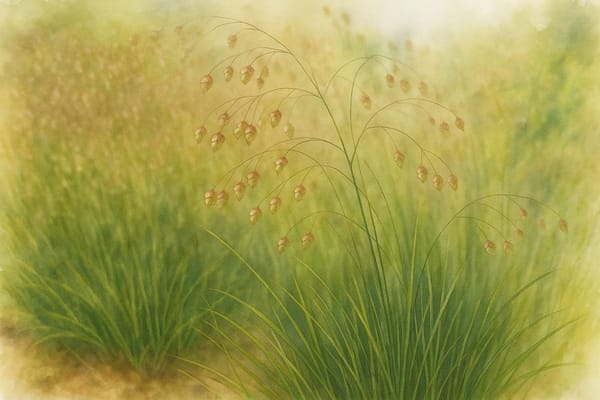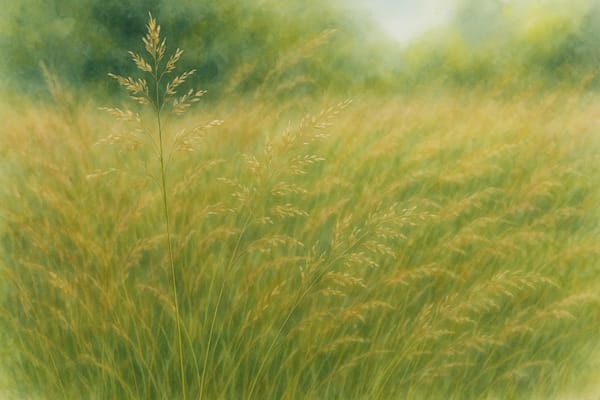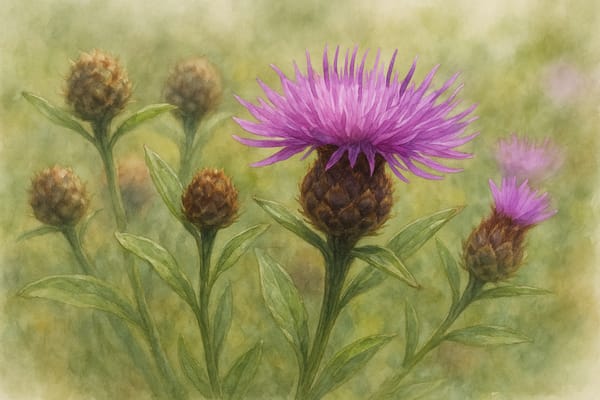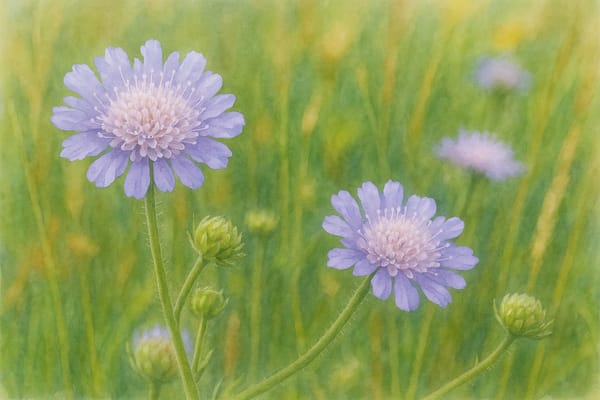It begins with a tremble. A summer breeze picks up across a Cornish field, and somewhere among the knapweed and bedstraw, the quaking heads of Briza media begin to dance. Each delicate panicle nods on threadlike stems, suspended like pendants above the swaying sward. This is not a grass that shouts, but rather one that shimmers. And in the quiet elegance of its trembling, it tells a story of continuity, rarity, and resilience.
A Grass of Tradition and Place
Briza media, often called quaking grass, has long been a signature of the old, untamed meadows of Britain. In Cornwall, its presence is not common—indeed, it is now considered locally scarce—but where it does remain, it offers a powerful signal. This is a plant that flourishes only where time has passed gently: on unimproved, species-rich grasslands, calcareous slopes, and sun-warmed coastal banks. It appears most reliably in places like the Lizard Peninsula, where serpentine soils and traditional grazing regimes maintain rare ecological communities, or amid the sandy, lime-influenced soils of Penhale Towans and select field margins tucked between Cornish headlands.
Where Briza media grows, it almost always shares the stage: among orchids, lady’s bedstraw, wild thyme, and hawkbits, painting a portrait of layered biodiversity. It avoids the vigorous clutches of intensively managed farmland. Fertilisers, reseeding, and deep ploughing are death knells for this gentle grass. Thus, it persists only in fragments—ghosts of a larger, lusher past.
Beauty in the Breeze
There is a reason gardeners have long been drawn to Briza media beyond its ecological merit. Its nodding seed heads, shaped like tiny hearts or flattened bells, shimmer with movement at the lightest touch. These delicate quivers bring rhythm and animation to borders, particularly in naturalistic and wildlife-friendly gardens, where soft textures and seasonal transitions are celebrated. In dried arrangements, its panicles offer lasting beauty, preserving their form through winter when little else remains.
It is a plant that speaks in subtleties: the dry whisper of seed against seed, the way sunlight flickers through its dancing form. And yet, its impact—both visually and ecologically—is profound.
A Cornerstone of Biodiversity
Despite its quiet appearance, Briza media plays an outsized role in the life of a meadow. Its seeds feed birds such as yellowhammers, linnets, greenfinches, and house sparrows, especially in the leaner months of late summer and autumn. Its stems provide shelter for insects—grassland moths, beetles, and bugs find homes in its miniature canopy. Beneath the soil, its fibrous roots contribute to the living fabric of the land, binding earth, preventing erosion, and supporting the activity of mycorrhizal fungi and soil invertebrates.
More than just a member of the grassland community, Briza media helps hold it together, both physically and biologically. It grows modestly, allowing wildflowers to flourish around it rather than outcompeting them. Its role is one of quiet cooperation.
A Grass Under Pressure
In Cornwall, as across the UK, Briza media is not yet officially endangered—but its story is one of retreat. It now survives in a patchwork of strongholds, largely due to the erosion of its preferred habitat. As traditional meadow management has given way to silage systems, and as grazing has decreased or intensified beyond balance, the grass has lost its hold on the wider landscape.
Where once it might have shimmered across rolling pastures, it now flickers only at the margins—on roadside verges, field edges, and conserved coastal slopes, or in small meadows still managed by haycut and sheep nibble. In botanical records, it is often listed as "Cornwall Rare," found in just a few significant sites.
Its decline underscores a broader truth: that the survival of species like Briza media is inextricable from the survival of traditional practices. Hedgelaying, rotational grazing, late cutting—these are not just cultural relics, but ecological lifelines.
Gardeners as Stewards
For those cultivating gardens in Cornwall—or indeed anywhere with suitable soil and sunlight—Briza media offers a chance to not just admire the wild, but to protect and participate in it. It is an easy keeper, requiring little water once established. Its roots lend it a strength beneath the surface: drought resilience, soil binding, and tolerance for exposed sites. It can thrive in gravel gardens, green roofs, dry meadows, and coastal plots, especially where lime or neutral soils prevail.
As a garden plant, it contributes structure and movement. As a habitat plant, it supports insects, birds, and small mammals. As a climate-resilient species, it continues to function even under pressure—holding slopes, sequestering carbon, and maintaining beauty through long dry spells.
Briza media belongs to a family of grasses that increasingly hold answers to gardening in a warming, drying world. Yet it also holds something older: a link to the pastoral history of Cornwall, the sounds of hay being scythed, the blink of sun on wind-bent grass, and the quiet abundance of fields that fed both livestock and lark.
A Folkloric Touch
It is perhaps unsurprising that Briza media has entered the world of folklore. The trembling movement of its seed heads gave rise to associations with nervousness and spiritual sensitivity. Some believed it could calm the agitated heart or ward off trembling illnesses. In herbal traditions, it has been used—albeit sparingly—as a sedative, diuretic, and digestive aid. These uses reflect not only a practical relationship with the land, but also the symbolic one: a belief that plants carried clues to our own imbalances, revealed in their form and behaviour.
Though its role in modern medicine is largely historical, Briza media still holds space in ethnobotanical memory, as a plant that offered comfort through both presence and preparation.
A Grass for the Future
To plant Briza media is to plant a gesture of care: for birds, for soil, for beauty, and for the invisible systems that keep gardens alive. It is a small act of rewilding, a reclamation of something fragile but enduring. In a time when wild grasslands are becoming ever rarer, a single square metre of quaking grass can whisper of what once was—and what could be again.
Its quiver is a kind of speech. Not loud, but meaningful.
And perhaps in that movement, we are reminded: that gentleness is strength, that grace is purpose, and that the smallest things can hold the richest stories of place.











